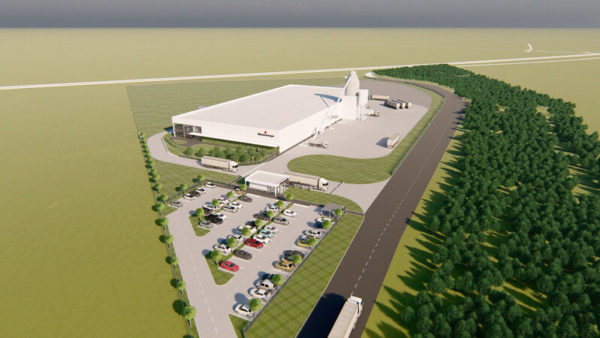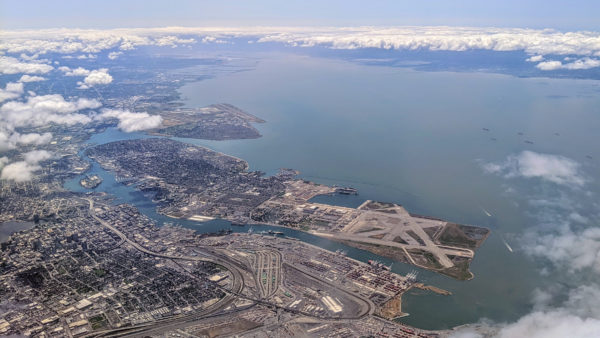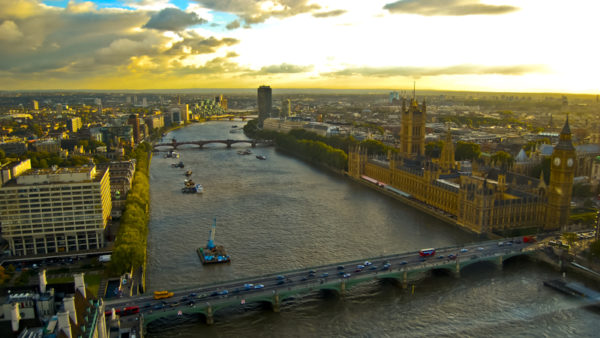The US will drill a borehole more than 16,000 feet (4.8km) into rock in North Dakota to test a new method proposed by UK researchers for storing radioactive waste.
Proponents of the method insist it could solve a problem that has vexed governments for years.
Radioactive material will not be poured into the narrow hole. Instead, scientists will study how such a deep wellbore behaves in order to consider the feasibility of the approach.
Scientists at the University of Sheffield, UK, who have been developing the concept of "deep borehole disposal", say it would be the safest and cheapest way of dealing with the "hottest" – most radioactive – waste.
They claim that all of the UK’s high level nuclear waste from spent fuel reprocessing could be put safely in just six such boreholes on a site no bigger than a football pitch.
Last month the US Department of Energy selected a team to drill a test borehole into a crystalline basement rock formation on a 20-acre patch of state-owned land near Rugby, North Dakota.
The boreholes can survive earthquakes intact and they are cheap to construct, costing tens of millions of dollars as opposed to the tens of billions a mined repository would require
US energy secretary Ernest Moniz said it would be "an important first step" in understanding the potential uses of rock formations in long-term nuclear waste disposal.
The announcement sparked concern among local officials who worried that if the borehole was found to be suitable, the site would be used as a waste dump.
But Sheffield researchers say deep borehole disposal has strong advantages over the mined repository approach, which both the US and UK governments have been pursuing unsuccessfully for years while waste stockpiles have continued to mount.
Anticipating the US test site last year, Sheffield’s Faculty of Engineering said a borehole could be drilled, filled and sealed in less than five years, compared to the current timescale for a UK mined repository, which would not take its first waste until 2075 – although a site has not yet been agreed.
A borehole site would also take up minimal space. The holes in question are just 0.6m in diameter, at most, and can be positioned just a few tens of metres apart.
The boreholes can survive earthquakes intact and they are cheap to construct, costing tens of millions of dollars as opposed to the tens of billions a mined repository would require, the faculty said.
The Sheffield Deep Borehole Disposal Research Group, in collaboration with Sandia National Laboratories of the US, is now developing a programme of research for the North Dakota field test. Issues to be investigated include how to prevent groundwater corrosion of the waste packages and how to seal the borehole to prevent radioactive waste escaping.
In North Dakota the drilling team will consist of research organisation Battelle Memorial Institute, the University of North Dakota Energy & Environmental Research Center, drilling technology giant Schlumberger and Swiss ground engineering firm Solexperts.
Photograph: A permanent solution for storing radioactive waste has eluded governments to date (János Korom/Wikimedia Commons)
Comments
Comments are closed.











We are in the year 2016 and we need “researchers” to come up with this solution! Any average 6th grader could come up with this.
why is the u.s. responsible for u.k. nuclear waste disposal?
Wouldn’t it be easier to just develop alternatives like solar/wind/water and not have to worry about this mess for 250,000 years.
Probably the best idea yet, for disposing radioactive (and other super hazardous) wastes. Even the drilling mud/slurry waste can be dumped on top of the radioactive waste — getting rid of the spoil and helping seal the bore hole at minimal cost.
I’m really sorry for the late reaction, but I think the deep borehole disposal proposals in this situation are absolutely brilliant, and could potentially solve the entire problem of nuclear waste for many years to come without any real drawbacks like normal waste storage etc. And another top benefit to this, is that the molten outer core is composed of mostly radioactive materials naturally, and the borehole waste could eventually blend in with the centre of the Earth, and serve as an important fuel source for the core in turn (this would of course, ensure that with the new batches of heat to keep it spinning nicely as ever, the EM field generated by this will remain largely stable for years to come, and thus the solar winds launched from the Sun would be blocked from irradiating the earth, and creation’s survival is ultimately secured for the foreseeable future too, then folks.) Coupled with the Sheffield scientists statement on the same thing, I sincerely hope and pray that we move in the right direction, and gradually make deep borehole disposal of atomic waste a commercial business that is of low cost, maintenance and hazard to all of us, of course too, then men. P.S. And as Abinico said, we should also, in the meantime, focus on renewable energy sources such as solar, wind and water, to meet our simple energy needs after we stop using fossil fuels once and for all anyway too, then guys. Just take all this simple advice and steps, and we can achieve this true storage of hazardous waste for many years to come again too, then men. Thanks too, then men. Amen.